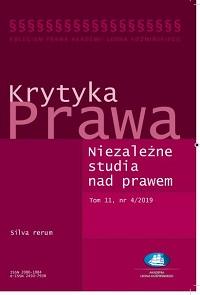The events that took place in Poland 2015 and 2016, concerning the actions taken by the new parliamentary majority, including changes in the composition, procedurę and legal basis of the Constitutional Court (Constitutional Court Act) were an inspiration to the reflections presented in this paper. Discussed in the paper are three main points of the functioning of the Constitutional Tribunal (CT) in Poland. The first outlines the genesis of CT, starting with the period of real socialism (1982). This is quite important as the original concept of CT, despite the constitutional declaration of independence of the judges, assumed some degree of parliamentary supervision (i.e. a hegemonic political party). The text also describes how CT at the time able was to achieve independence and consolidate its authority, illustrating how this body – already included in the judiciary – was constituted in the Constitution of the Republic of Poland in 1997. The second point consists of a short chronicle of events, including the adoption of the five successive legal acts (amendments or new Constitutional Court Acts), and the way in which attempts were made, sometimes even by legal tricks, to change the composition of this court to a politically more favourable and to block its freedom or to revoke the court’s ruling. With the final passing of three new laws on the organisation and the procedure of the Constitutional Tribunal and the status of its judges, whose negative consequences continue to appear. At the same time, international institutions (the Venice Commission, the European Parliament and the European Commission) announced their opinions, expressing concern about the situation in Poland from the point of view of European standards of Rule of Law. The third point touches probably the most important issue – the doctrinal and constitutional consequences, as well as the problems brought by these events to the Polish constitutional law science and the constitutional and political practice.




